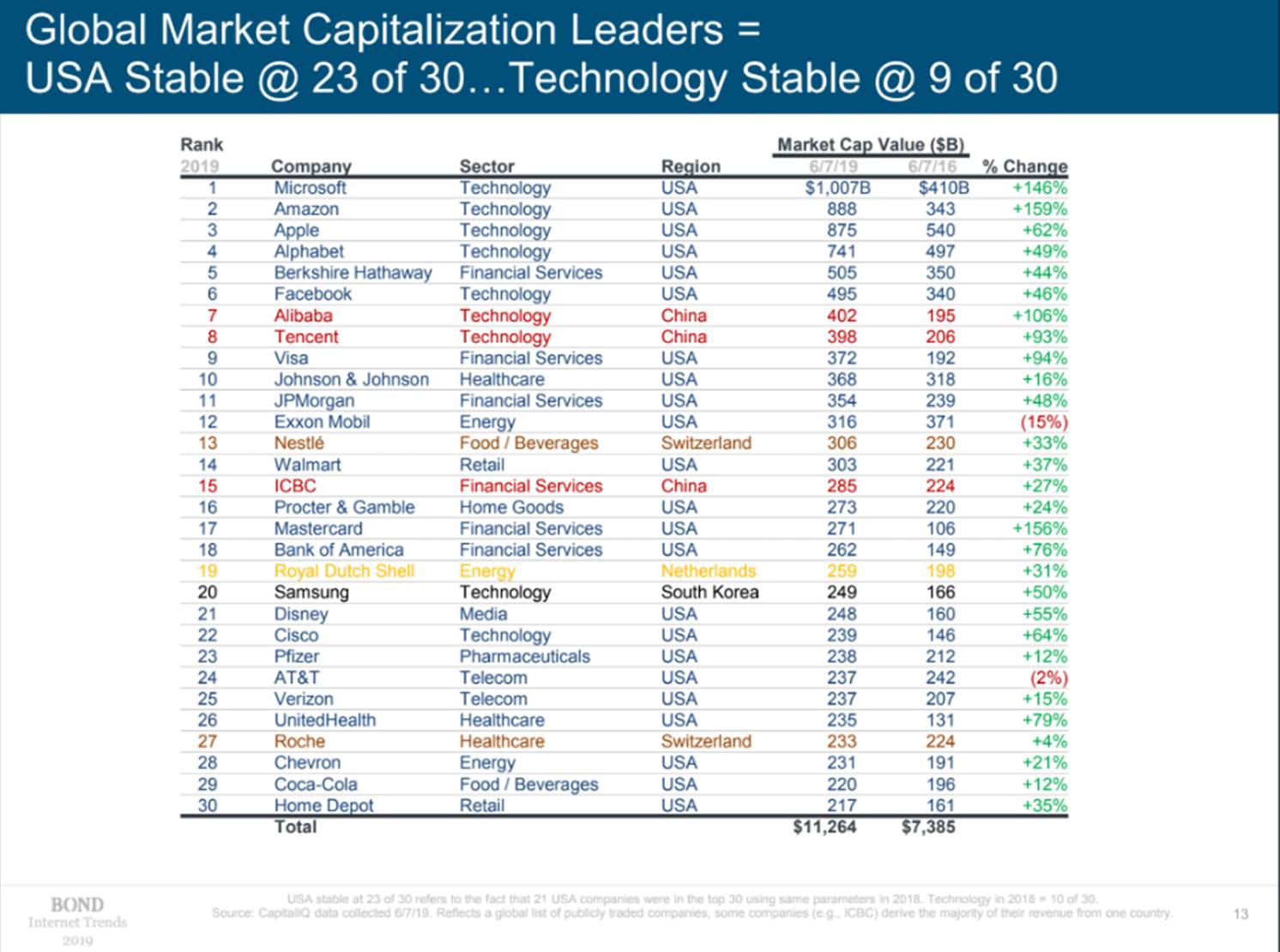
Greetings from the Windy City, where yours truly (and the Editor) spent some time sightseeing, working, and enjoying the architecture (the Trump Tower is “huge”). This week, we have space to cover two key events – the September 10 Apple product announcement and the Elliott Management memo to AT&T.
The Apple announcement: Waiting for the other (Apple Card) shoe to drop
On Tuesday, Apple announced a slew of new products including the iPhone 11, iPhone Pro and iPhone Pro Plus. Many analysts have written entire briefs on the products (two examples are Ars Technica here and CNET here), but there are three specific items that are worth emphasizing:

- Apple is going to be offering and aggressively advertising monthly financing for every iPhone purchased in-store or online. The manifestation of this is clearly seen in the new iPhone 11 display screen (picture nearby). While this new detail may seem small, the fact that an after trade-in monthly price is shown (24 months, good credit at 0% a.p.r) is new for the Cupertino giant. Previously, 24-month financing was only available if customers purchased the device and AppleCare+ (the premium was equal to the 2-year price of AppleCare+ divided by 24). This 9to5mac.com article describes the current Apple Store upgrade process; the good news is that Apple Payment and Apple Upgrade will exist side-by-side with the AppleCare+ upgrade.
- Apple is also going to accept devices for an instant top-dollar trade-in online and in-store. This is completely new and covers a wide range of Apple products (iPhone, iPad, Mac, etc.). The structure of the trade-in (including the trade-in values used in the example) looks a lot like that used by Best Buy (who has a very good reputation for fair trade-in values). It also appears that Best Buy is adding an extra activation bonus to their offer (see here), giving the Minnesota retailer the lowest entry point for equipment installment plan purchases (Sprint’s leasing plans are the lowest overall entry cost).
The instant nature of the trade-in contrasts with Verizon, who applies their “up to $500” value across 24-months (subtle, but Apple is taking the churn risk on the monthly payments up front) with a $200 prepaid card for those who switch from another carrier.
- The most surprising item (besides the overall price reduction of the iPhone 11) was the inclusion of CBRS (LTE Band 48) and Wi-Fi 6 (802.11ax) in all three devices. This, combined with eSIM functionality that started with last year’s models, sets the stage for increased use of licensed spectrum alternatives (see the September 1 TSB titled “CBRS – Share and Share Alike” for more details). A great Light Reading article outlining Charter/ Spectrum’s use of eSIM to offload Verizon data traffic is here.
- It goes without saying, but the inclusion of a free year of Apple TV+ with every new iPhone purchased ($60 value) might tip the scales towards an immediate purchase.
Interestingly, there was no separate presentation focused on the Apple Card (although it was mentioned many times, including in Dierdre O’Brien’s presentation). Our assumption is that Apple Card orders are plentiful and given Apple’s recent advertising push needed no additional on-stage fuel.
Our prediction still stands: Soon, Apple Cards will be used to finance devices on 24-month installments and customers will be able to instantly apply their credit card usage perks to their monthly payment (perhaps with an additional kicker if it’s used for that purpose first). This will create increased attractiveness for Apple Store (and online) purchases of the device and will boost retention at the expense of low/zero margin wireless carrier revenues. While the short-term financial ramifications are positive for the carriers (and likely neutral for Apple), the long-term impact of removed “hook” to the customer will either drive wireless carrier churn higher or drive plans back to contracts.
The Elliott management memo: Dominate, divest, dedicate, deliver

As most of you know by now, Elliott Management went public with their concerns about AT&T through the www.activatingatt.com website and a 28-page memo that challenges nearly every major management decision made in the past decade.
While the tone is cordial, its uncharacteristic Southern “Bless Your Little Heart” gentility is thinly veneered. As my senior English teacher, Joan Foley, prominently said: “Be what you are.” – Mr. Stephenson and the AT&T Board can take it.
The memo’s points are extremely well laid out, balanced, and challenging. One would think that the Elliott Management team were long-time TSB readers with the stinging indictment of AT&T’s merger moves, content + connectivity strategy, and insular succession planning. The result of this over the past 3 years was shown in the Mark Meeker presentation slide below (from the June 30 TSB – full post here):

While the immediate comparison to Verizon (#25) is damning (17% greater value created over the past three years than AT&T), the greater concern is that their suppliers (Samsung, Apple, Cisco) are exercising superior value gains (Samsung +50%, Apple +62%, Cisco +64%).
We don’t know every detail of the Elliott Management plan but believe that it’s definitely a good start. AT&T has been playing a lot of “play not to lose” defense over the past decade; the “Bring the Bell Band back together” strategy of the 1990s and 2000s did not port to non-Bell acquisitions. We would like to propose some slight amendments to Elliott Management’s strategy and propose structuring AT&T’s transformation around four elements:
1. Dominate the wireline and wireless markets (and be bold about it). Where you are the incumbent local provider, be the most important player in connecting homes and buildings to mobile. Leverage your local presence with widespread use of fiber that you have been supposedly been deploying for the past seven years (AT&T’s DNA is to think “One Fiber”). Aggressively move away from legacy technologies – not because they are too costly, but because your customers desire mobility over stationary premise equipment. Prioritize fiber above everything else, operate and care for it as if it’s the corporate crown jewel (it is), and deliver meaningful market share. Value wireline. Beat cable to a pulp. Break out into a little Charlie Daniels: “We’re walking real loud and we’re talking real proud again.”
On the wireless front, leverage the FirstNet capacity discussed by John Stephens in August and allow customers who have 1080p devices to receive 1080p streaming for free. This would force T-Mobile and Verizon to show their 480p hands and likely drive more upgrades to 1080p-capable devices. Apply this to both Cricket and wholesale customers as well.
2. Divest (or deal) where it makes sense. We think that Elliott Management is a bit too quick to declare DirecTV, Time Warner and AT&T Mexico as failures. But it does make sense to decide whether Alarm.com, ADT or Vivint are better companies to serve the residential security market. And, if AT&T can only implement their fiber strategy in metropolitan areas, sell off the more rural parts of the franchise (with very attractive DirecTV rates as a sweetener). For example, here’s a map of the North Carolina local exchanges (full map is here):

The olive-colored area is AT&T. The remaining areas are not AT&T. Follow cable’s moves of 25+ years ago and re-cluster the local exchange footprint. Unless it’s an area where you can win with a fiber footprint or CBRS last mile, trade or sell, using DirecTV service price as a sweetener. This will allow you to focus on winning (offense – fiber), not preserving (defense – DSL).
3. Dedicate resources to convergence. We spent nearly an entire TSB two weeks ago talking about AT&T’s Domain 2.0/ SDN/ NFV moves (led by John Donovan and Jeff McElfresh). Now that those efforts are largely underway (and AT&T is regarded as the leader), focus on using the entire suite of assets to deliver innovation. An easy example: Every bit of content that AT&T owns can be stored on any AT&T subscriber device as a part of their monthly service. For example, if an HBO customer has a history of watching HBO through their mobile device, AT&T should ask if they can download the entire season to mobile ROM (storage) that evening. This is what Pandora does with Thumbs Up Radio. It might consume 2-3 Gigabytes, but the customer gets the entire season and AT&T’s streaming resources are not taxed. AT&T should be more aggressive with each music provider about duplicating premium “save for offline” services (YouTube Premium does this in addition to Pandora). And AT&T should allow customers to replay any (start with Time Warner) recording, selected or not, that was broadcasted in the last 24 hours through DirectTV or AT&T’s TV services. This strategy may require more resources than merely product and marketing – a lot of legal action may be needed. Cloud is cheap, and, with Microsoft and IBM as strategic partners, the lift just got a lot easier.
4. Deliver brand promises. AT&T and IBM used to be known as the brands that “no one was ever fired for selecting.” Times have changed, and Microsoft, Amazon, Cisco, Google, Netflix, Hulu, Verizon and others command an equal footing to Ma Bell and Big Blue depending on the market and the product. Own the service standard for residential and business communications. Fire or retire those suppliers/ partners/ employees who will only “play not to lose.” Be known for going the extra mile and not cutting corners.
To beat Verizon, AT&T will need to leverage their larger local fiber footprint and the aforementioned Microsoft/ IBM/ Airship relationships. To beat T-Mobile, AT&T will need to deliver 1080p services for the same price as 480p, use Time Warner and other content partnerships to deliver content efficiently and improve their in-store and web-based service. To beat Comcast and Spectrum, AT&T will need to deliver more reliable broadband (with service guarantees) for 10-20% less. To beat Dish, AT&T will need to build a more competitive video equation for rural markets. All of these are possible, and all can be executed simultaneously with the right leadership.
Unlike Elliott, I think AT&T has several strong layers of strategic, smart leaders. From within, they need a standard bearer who can rally each employee around a vision of “defeat and deliver – or get out.” If AT&T uses the Elliott memo to play more offense, their shareholders will cheer.
Next week, we will highlight some wireline trends and talk about overall profitability across the telecommunications sector. Until then, if you have friends who would like to be on the email distribution, please have them send an email to sundaybrief@gmail.com and we will include them on the list.
Have a terrific week… and GO CHIEFS!

